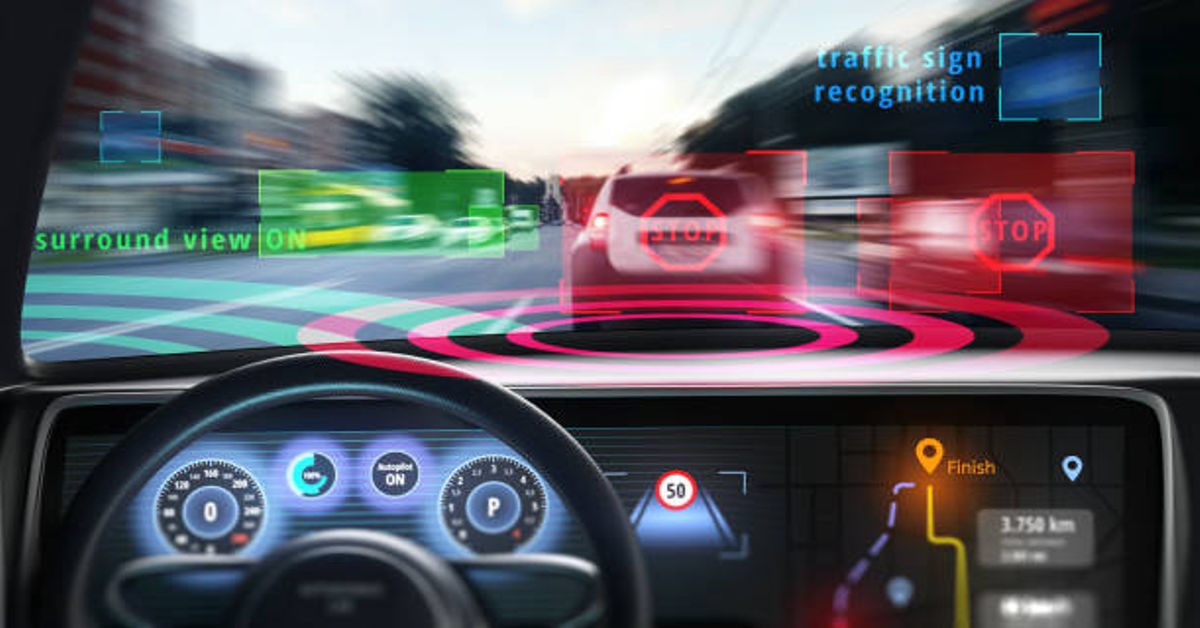Modern transportation is evolving faster than ever, powered by innovation in artificial intelligence, automation, and connectivity. Among the most groundbreaking developments is driver signals technology, a field that focuses on interpreting, analyzing, and responding to driver behaviors and environmental cues to improve safety and efficiency on the road. As vehicles grow smarter, “Top Driver Signals Technology” has become the core of autonomous driving systems, driver assistance programs, and safety monitoring tools that shape the future of mobility.
This article explores in depth what driver signals technology is, how it works, what top systems currently dominate this space, its applications, ethical implications, and the future it promises. By the end, you’ll understand why this technology represents one of the most transformative steps toward fully autonomous and safe driving experiences.
1. Understanding Driver Signals Technology
Driver signals technology refers to the use of sensors, cameras, artificial intelligence, and machine learning systems to analyze driver behavior, physical conditions, and environmental data to predict or prevent unsafe driving actions. The goal is to create vehicles that understand the driver’s state and surroundings in real time.
These systems track everything from eye movements, steering inputs, acceleration patterns, heart rate, and facial expressions to determine whether a driver is alert, distracted, drowsy, or stressed. Beyond the human element, they also interpret road conditions, traffic signals, and other vehicles’ actions — generating a complete “signal map” for smarter decisions.
Essentially, driver signals technology acts as a bridge between human intention and machine intelligence, allowing vehicles to react proactively to both internal and external conditions.
2. The Core Components of Driver Signals Technology
The effectiveness of driver signals technology depends on a blend of hardware and software components that work harmoniously to interpret and respond to data in milliseconds. Below is a breakdown of the major elements:
| Component | Function | Example of Application |
|---|---|---|
| Sensors | Detect physical data like motion, speed, and position | Steering torque sensors, accelerometers |
| Cameras | Monitor facial expressions, eye movement, and environment | Driver monitoring cameras, lane cameras |
| AI Algorithms | Analyze patterns and predict driver intent | Deep learning neural networks |
| Signal Processors | Convert raw data into actionable insights | Real-time image and signal processors |
| Warning Systems | Alert drivers or control systems to hazards | Visual, audio, or haptic feedback |
| Connectivity Units | Enable communication between systems and networks | Vehicle-to-Everything (V2X) modules |
These components interact constantly, ensuring the system adapts to the driver’s behavior and surrounding traffic dynamics, minimizing human error and improving decision-making speed.
3. How Driver Signals Technology Works
At its core, driver signals technology relies on data interpretation through machine learning. The process involves several stages that convert real-world sensory inputs into intelligent driving actions:
- Signal Detection: Cameras and sensors detect signals such as the driver’s gaze direction, hand movements, steering input, and road conditions.
- Data Processing: Signal processors clean and structure the incoming data for analysis.
- Behavioral Interpretation: Machine learning algorithms interpret these signals, identifying patterns that indicate fatigue, distraction, or aggressive driving.
- Decision Layer: The system decides whether to issue warnings, adjust control parameters, or take automated action.
- Feedback Mechanism: Alerts are given through sound, vibration, or visual cues. In advanced systems, control actions like automatic braking or steering corrections are performed.
This constant feedback loop ensures that the vehicle is aware not only of its surroundings but also of the human emotional and cognitive state behind the wheel.
4. Key Applications of Top Driver Signals Technology
Driver signals technology extends far beyond luxury car features. It forms the backbone of several major systems that are now becoming standard across modern vehicles.
A. Driver Monitoring Systems (DMS)
DMS uses infrared cameras and sensors to track the driver’s eyes, face, and head position. If a driver shows signs of fatigue or distraction, the system issues alerts or takes corrective action such as gentle steering adjustments.
B. Advanced Driver Assistance Systems (ADAS)
ADAS combines driver signals with environmental data to provide lane-keeping assistance, adaptive cruise control, and collision avoidance. It interprets both the driver’s and the road’s “signals” to ensure safety.
C. Autonomous Vehicle Integration
In semi- and fully autonomous cars, driver signals help the vehicle understand when to transition between manual and autonomous modes safely.
D. Fleet Management and Commercial Use
Trucking companies use driver signal monitoring to ensure their drivers are alert, compliant, and safe, reducing accidents caused by fatigue or negligence.
E. Insurance and Risk Management
Some insurers are adopting driver signal analytics to tailor insurance rates based on safe or risky driving patterns.
5. The Top Technologies Leading the Field
Numerous companies and research institutions are driving innovation in this field. While proprietary systems vary, several top technologies define the current landscape of driver signal innovation.
| Technology Name | Developer/Provider | Key Feature | Primary Function |
|---|---|---|---|
| Driver Sense AI | Smart Eye | Real-time eye and face tracking | Drowsiness detection |
| Guardian System | Seeing Machines | Emotion recognition & fatigue prevention | Fleet safety monitoring |
| Driver Attention Camera (DAC) | Bosch | Eye-tracking and lane monitoring | Accident prevention |
| Super Cruise | General Motors | Hands-free driving with driver gaze verification | Semi-autonomous driving |
| EyeSight Technology | Subaru | Dual-camera-based driver and pedestrian detection | Automatic braking & lane assistance |
These systems represent the forefront of driver signals technology, combining AI precision with automotive engineering to create vehicles that “think” alongside their human operators.
6. How Driver Signals Improve Safety
Statistics show that driver error contributes to over 90% of road accidents. By monitoring physical and behavioral signals, vehicles can detect potential risks before they result in accidents. For example:
- A car notices the driver’s eyelids closing repeatedly and issues a fatigue alert.
- The steering sensor detects erratic lane movement, prompting lane-keeping assist.
- The gaze detection system recognizes distraction from a phone and issues a warning.
This proactive approach reduces collisions, enhances reaction times, and provides critical assistance in life-threatening moments.
| Safety Feature | Signal Used | Outcome |
|---|---|---|
| Drowsiness Alert | Eye closure frequency | Warns or slows vehicle |
| Distraction Warning | Gaze direction | Visual or audio alarm |
| Adaptive Cruise | Proximity sensors | Maintains safe distance |
| Collision Avoidance | Forward cameras | Auto brakes if needed |
| Steering Assist | Lane detection & input force | Keeps car centered |
7. The Science Behind Driver Signal Interpretation
Driver signal technology relies on biometric and behavioral data interpretation. The science behind it involves correlating physical cues with psychological states.
- Eye Movement Patterns: Longer blinks and downward gazes indicate fatigue.
- Facial Expression Analysis: Micro-expressions reveal stress, anger, or distraction.
- Physiological Monitoring: Heart rate or skin temperature may signal drowsiness.
- Steering Input Analysis: Small, abrupt movements can suggest inattentiveness.
- Gaze and Head Orientation: Shows whether the driver is focused on the road or elsewhere.
Machine learning models are trained on thousands of hours of driving behavior to recognize these patterns accurately. As the technology matures, it increasingly resembles a digital co-driver that understands the driver’s emotions and reactions.
8. Integration with Autonomous Driving Systems
Driver signals technology plays a crucial role in Level 2–4 autonomous systems, where vehicles can drive themselves under certain conditions but still require human supervision.
When the driver must retake control, the system verifies alertness through eye-tracking or facial recognition. If the driver is not paying attention, the car may delay transferring control or initiate safe-stop protocols.
This ensures seamless communication between human and machine — preventing confusion during transitions, which is one of the most critical phases in automated driving.
9. Role of Artificial Intelligence and Machine Learning
Artificial intelligence (AI) forms the brain of driver signals technology. Deep learning models are trained on massive datasets containing millions of human behavior samples. AI can recognize not just simple gestures but also complex emotional states like frustration, distraction, or anxiety.
Machine learning enables the system to adapt to individual drivers, learning patterns over time. For instance, one driver might glance away briefly without risk, while another shows consistent inattentive habits. AI tailors feedback accordingly, reducing false alarms and improving comfort.
10. Communication and Connectivity: V2X Integration
Next-generation driver signal systems integrate with Vehicle-to-Everything (V2X) networks. This allows vehicles to communicate not just with drivers but also with traffic lights, other cars, and infrastructure.
For example:
- A vehicle approaching a red light receives a V2X alert, and the driver signals system ensures the driver is paying attention.
- The car can coordinate braking timing with surrounding vehicles to prevent collisions.
- If a driver ignores traffic signals due to distraction, the system can intervene.
Such synergy between human-driven and connected technologies moves society closer to zero-accident mobility.
11. Challenges and Limitations
Despite impressive progress, driver signal technology still faces challenges:
- Privacy Concerns: Monitoring cameras and sensors raise questions about data usage and driver consent.
- Environmental Factors: Lighting, weather, and facial coverings can interfere with sensor accuracy.
- False Positives: Misinterpreting normal behavior as fatigue can annoy drivers.
- Cost: Advanced sensors and AI integration increase vehicle prices.
- Ethical Dilemmas: How much should a car intervene in human decision-making?
These challenges demand careful design and regulation to balance innovation with ethical responsibility.
12. Advantages of Top Driver Signals Technology
| Advantage | Impact |
|---|---|
| Enhanced Safety | Early warning and accident prevention |
| Comfort & Convenience | Reduced fatigue, smoother ride experience |
| Reduced Insurance Claims | Fewer accidents lower insurance costs |
| Improved Fleet Management | Driver monitoring increases efficiency |
| AI Personalization | Learns driver behavior for tailored assistance |
The ultimate goal is zero fatalities through intelligent intervention, and driver signal systems are one of the most effective routes to achieving that.
13. Real-World Use Cases
Several industries are already integrating driver signals technology with remarkable results.
A. Automotive Manufacturing
Brands like Tesla, Ford, and BMW employ driver signal analytics to refine their autopilot and driver-assist systems.
B. Commercial Transport
Truck fleets use driver fatigue monitoring to prevent highway accidents, saving lives and reducing insurance premiums.
C. Public Transport
Buses and rail systems implement driver alertness systems to ensure consistent operational safety in long shifts.
D. Aviation and Marine Sectors
Similar technologies are adapted to monitor pilot alertness and ship operator performance in high-stakes environments.
14. Ethical and Legal Considerations
With great technological power comes great ethical responsibility. The collection and analysis of biometric data must respect privacy laws and personal rights. Regulations such as the General Data Protection Regulation (GDPR) and California Consumer Privacy Act (CCPA) demand explicit consent for data collection and usage.
Manufacturers must ensure:
- Data is anonymized when stored.
- Drivers can access and delete their information.
- Cameras do not record without permission.
- System data is used solely for safety enhancement.
By implementing these safeguards, the industry can maintain trust while advancing innovation.
15. Future of Driver Signals Technology
The future holds immense potential. Innovations in neural sensors, emotion AI, brain-computer interfaces, and predictive analytics will push driver signals far beyond today’s boundaries.
Emerging trends include:
- Emotion-aware vehicles that detect stress and play calming music.
- Adaptive interiors that change lighting or temperature based on mood.
- Predictive driving AI that prevents accidents before they become visible threats.
- Full AI co-pilots capable of completely understanding human attention and reaction patterns.
Within a decade, such systems will redefine the very nature of human-machine collaboration in mobility.
16. Comparative Analysis: Traditional vs. Intelligent Systems
| Parameter | Traditional Driving | Driver Signals Technology |
|---|---|---|
| Human Error Rate | High | Significantly Reduced |
| Reaction Time | Slow (Human-based) | Millisecond Decision-making |
| Data Awareness | Limited | Real-time 360° Environmental Awareness |
| Fatigue Monitoring | None | Active Fatigue Detection |
| Intervention Capability | Manual Only | Automated Assistance |
| Predictive Ability | Reactive | Predictive and Preventive |
This comparison clearly shows how driver signals technology transforms driving from a reactive task into an intelligent, proactive system.
17. Economic Impact
The adoption of top driver signals technology is expected to reshape the global automotive economy. The benefits extend beyond safety:
- Reduced Accident Costs: Fewer crashes lower repair and insurance expenses.
- New Market Opportunities: AI-driven automotive components become valuable sectors.
- Job Creation: Engineers, AI specialists, and data analysts find new roles.
- Consumer Trust: Safer vehicles increase brand loyalty.
- Environmental Efficiency: Smarter driving patterns reduce fuel consumption and emissions.
By 2030, analysts predict that vehicles with advanced driver signal systems will represent the majority of new car sales globally.
18. Conclusion
Top Driver Signals Technology marks a historic milestone in the evolution of mobility. It combines human intuition with artificial intelligence, transforming the act of driving into a seamless partnership between person and machine. Through continuous learning, real-time monitoring, and predictive insights, this technology minimizes human error — the leading cause of accidents — while enhancing comfort, efficiency, and awareness.
As society moves toward automation and smart mobility, the importance of understanding driver behavior becomes paramount. The success of tomorrow’s transportation systems depends not only on self-driving cars but also on driver-aware systems that protect, guide, and collaborate with human operators.
In essence, driver signals technology represents a future where cars don’t just respond — they understand. It’s the perfect intersection of human emotion and machine precision, leading us into a safer, smarter, and more connected era of driving.
Frequently Asked Questions (FAQs)
1. What is Top Driver Signals Technology?
It’s a system that uses sensors, cameras, and AI to analyze driver behavior, attention, and environmental data to improve safety and assist driving.
2. How does driver signals technology detect fatigue or distraction?
It monitors eye movements, facial expressions, and steering inputs to identify signs of tiredness or inattentiveness, then issues alerts or corrective actions.
3. Is driver signals technology part of autonomous vehicles?
Yes. It ensures safe transitions between manual and automated control, verifying that the driver is alert before handing over responsibility.
4. What are the main benefits of driver signals technology?
Improved safety, reduced accidents, personalized assistance, efficient fleet management, and a smoother, stress-free driving experience.
5. Does this technology invade privacy?
When designed ethically, it respects privacy by anonymizing data, obtaining consent, and limiting its use strictly to safety enhancement purposes.









